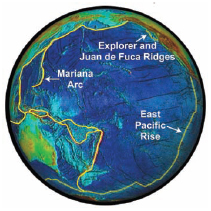Geography Oceanography, and WeatherVolcanoes |
What two volcanic eruptions had the biggest impacts on the climate in the twentieth century? |
The eruption of El Chichón in southern Mexico, which lasted from March 29 through April 4, 1982, and the June 15, 1991, eruption of Mt. Pinatubo in the Philippines caused significant disruptions to the planet’s climate. El Chichón shot about 7.75 million tons (over 7 billion kilograms) of sulfur dioxide into the atmosphere, as well as some 24.25 million tons (22 billion kilograms) of other dust and particles. Coincidentally, there was a strong El Niño building at the same time. While the El Niño effect worked to warm ocean waters, the El Chichón eruption was cooling the atmosphere, and the result was that the two effectively cancelled each other out. That summer, when temperatures should have increased because of El Niño, the average temperatures were actually fairly normal. During the winter of 1982 to 1983, though, temperatures in Europe, Siberia, and North America were higher than normal, and temperatures in the Middle East, China, Greenland, and Alaska were cooler. This was because the gases from El Chichón had caused an arctic oscillation in the stratosphere, changing air current patterns.
When Mount Pinatubo erupted, it sent 20 million tons of sulfur dioxide into the sky, and estimates are that this resulted in an average worldwide temperature drop of 1.7°F (0.8°C) in 1992. The effects continued through 1993, as the haze produced by the extra sulfur dioxide in the atmosphere reflected the Sun’s rays.

